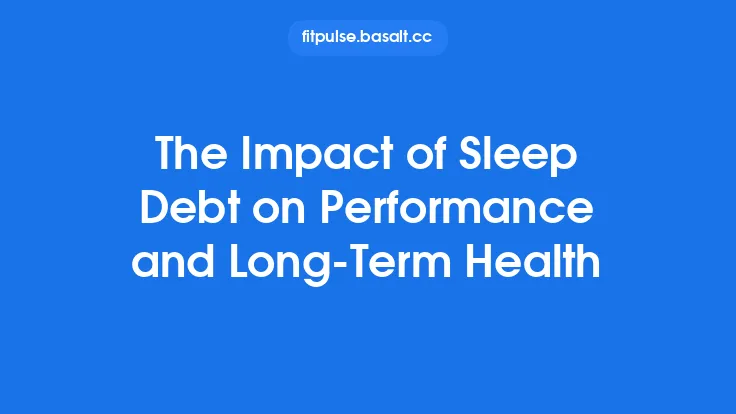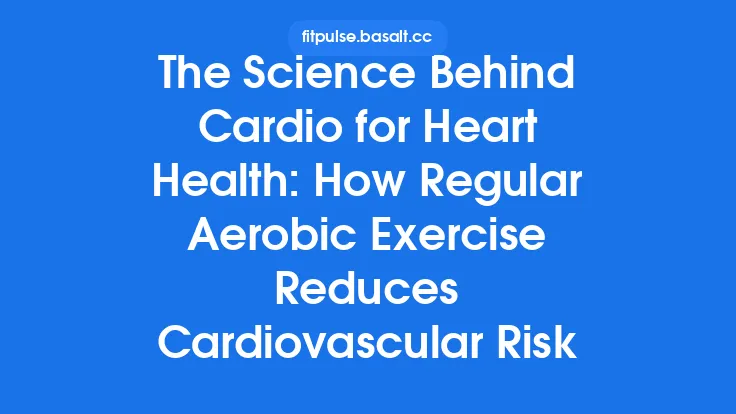Regular physical activity is more than a tool for building muscle or burning calories; it is a potent modulator of the body’s defense network. When performed consistently, exercise initiates a cascade of physiological events that fine‑tune both the innate and adaptive arms of the immune system, enhancing the body’s capacity to detect, respond to, and remember pathogenic threats. Understanding how these processes intersect provides valuable insight for clinicians, trainers, and anyone interested in leveraging movement to support immune health.
Physiology of the Immune System
The immune system comprises two interrelated branches:
- Innate immunity – the first line of defense, consisting of physical barriers (skin, mucosa), cellular components (neutrophils, macrophages, natural killer cells), and soluble factors (complement proteins, acute‑phase reactants). Its responses are rapid but non‑specific.
- Adaptive immunity – a slower, highly specific response mediated by B‑lymphocytes (antibody production) and T‑lymphocytes (cell‑mediated immunity). This branch also generates immunological memory, enabling faster and stronger reactions upon re‑exposure to the same pathogen.
Both systems rely on a tightly regulated network of cytokines, chemokines, and hormonal signals. Disruption in any part of this network can impair pathogen clearance, increase susceptibility to infection, or promote chronic inflammation.
How Exercise Modulates Innate Immunity
Mobilization of Immune Cells
During an acute bout of moderate‑intensity exercise, shear stress and catecholamine release (primarily epinephrine and norepinephrine) cause a rapid redistribution of leukocytes from peripheral reservoirs (e.g., spleen, bone marrow) into the bloodstream. This “exercise‑induced leukocytosis” peaks within 10–30 minutes of activity onset and includes:
- Neutrophils – essential for phagocytosis and early microbial killing.
- Monocytes – precursors to macrophages and dendritic cells, crucial for antigen presentation.
- Natural Killer (NK) cells – key effectors against virally infected cells and tumor cells.
The surge in circulating innate cells enhances surveillance capacity, allowing the immune system to detect and neutralize pathogens more efficiently during and shortly after exercise.
Enhanced Phagocytic Function
Post‑exercise, neutrophils and monocytes exhibit increased oxidative burst activity and phagocytic efficiency. This functional up‑regulation is partly mediated by elevated levels of interleukin‑6 (IL‑6) released from contracting skeletal muscle (see “Myokines” below). The net effect is a heightened ability to ingest and destroy bacteria and fungi encountered in the circulation.
Acute Phase Protein Response
Moderate exercise stimulates a modest rise in acute‑phase proteins such as C‑reactive protein (CRP) and serum amyloid A. While chronic elevation of these markers is associated with inflammation, the transient increase following exercise serves as a signal that primes the innate immune system without inducing pathological inflammation.
Exercise Effects on Adaptive Immunity
Lymphocyte Trafficking and Function
Similar to innate cells, lymphocytes (both B‑ and T‑cells) are mobilized into the bloodstream during exercise. Notably:
- CD8⁺ cytotoxic T cells and CD4⁺ helper T cells increase in circulation, enhancing the pool of cells available for antigen recognition.
- Regulatory T cells (Tregs) also rise, contributing to immune homeostasis and preventing excessive inflammatory responses.
After exercise, a proportion of these lymphocytes migrate to secondary lymphoid organs (e.g., lymph nodes, spleen), where they encounter antigens and undergo activation or differentiation.
Antibody Production
Repeated bouts of regular exercise have been linked to modest elevations in serum immunoglobulin A (IgA) and immunoglobulin G (IgG) concentrations. Secretory IgA, in particular, is a frontline defense in mucosal surfaces (respiratory and gastrointestinal tracts). Higher baseline IgA levels correlate with reduced incidence of upper respiratory tract infections (URTIs) in active individuals.
Memory Cell Formation
Animal studies and limited human data suggest that chronic moderate exercise may enhance the formation of memory B‑cells and T‑cells after vaccination or natural infection. This effect is thought to arise from improved antigen presentation by exercise‑primed dendritic cells and a more favorable cytokine milieu (e.g., increased IL‑7 and IL‑15, which support lymphocyte survival).
Intensity, Duration, and Frequency: Dose‑Response Relationships
The immune response to exercise follows a J‑shaped curve:
- Low to moderate intensity (40–60 % VO₂max) performed for 30–60 minutes, 3–5 times per week, generally enhances immune surveillance and reduces infection risk.
- High intensity or prolonged endurance sessions (e.g., marathon running, high‑intensity interval training >90 % VO₂max for >90 minutes) can temporarily suppress immune function, a phenomenon termed the “open‑window” effect, lasting 3–72 hours post‑exercise. This period is characterized by reduced NK cell activity, lower lymphocyte proliferation, and diminished salivary IgA.
- Very low activity (sedentary lifestyle) is associated with impaired immune cell function and higher baseline inflammation.
Thus, the optimal “immune‑boosting” prescription lies within the moderate zone, balancing sufficient physiological stress to stimulate adaptation without triggering prolonged immunosuppression.
Molecular Mechanisms: Cytokines, Myokines, and Hormonal Mediators
Myokines – Muscle‑Derived Signaling Molecules
Contracting skeletal muscle releases a suite of cytokine‑like proteins known as myokines, which act systemically to modulate immunity:
- Interleukin‑6 (IL‑6) – rises up to 100‑fold during prolonged exercise. Unlike its pro‑inflammatory role when secreted by immune cells, muscle‑derived IL‑6 exerts anti‑inflammatory effects by stimulating the production of interleukin‑10 (IL‑10) and interleukin‑1 receptor antagonist (IL‑1ra).
- IL‑7 and IL‑15 – support survival and proliferation of naïve and memory T‑cells.
- Brain‑derived neurotrophic factor (BDNF) – while primarily neurotrophic, BDNF influences immune cell trafficking and cytokine production.
Hormonal Influences
- Catecholamines (epinephrine, norepinephrine) – mediate leukocyte mobilization via β‑adrenergic receptors.
- Cortisol – rises modestly during intense exercise; chronic elevation can suppress lymphocyte function, underscoring the importance of adequate recovery.
- Growth hormone and IGF‑1 – promote thymic output and B‑cell maturation.
Collectively, these molecular signals orchestrate a coordinated immune response that enhances pathogen detection while limiting excessive inflammation.
Acute vs. Chronic Exercise Responses
| Aspect | Acute (single bout) | Chronic (regular training) |
|---|---|---|
| Leukocyte count | Transient increase (leukocytosis) | Baseline elevation of circulating NK cells and neutrophils |
| Cytokine profile | Spike in IL‑6, IL‑1ra, IL‑10 | Lower resting inflammatory markers (CRP, TNF‑α) |
| Antibody levels | Short‑term rise in IgA | Sustained higher baseline IgA and IgG |
| Vaccine response | May be enhanced if performed 1–2 days before immunization | Improved seroconversion rates after repeated training cycles |
| Infection risk | Reduced after moderate sessions; increased after very intense sessions | Overall lower incidence of URTIs compared with sedentary peers |
Understanding these temporal dynamics helps practitioners schedule training and recovery to maximize immune benefits.
Exercise and Immunosenescence
Aging is accompanied by immunosenescence—the gradual decline in immune competence characterized by reduced naïve T‑cell output, accumulation of senescent memory cells, and chronic low‑grade inflammation (“inflammaging”). Regular moderate exercise can attenuate these changes:
- Preservation of thymic output – exercise stimulates IL‑7, supporting naïve T‑cell production.
- Reduced senescent cell burden – physical activity lowers circulating pro‑inflammatory cytokines (IL‑6, TNF‑α) and oxidative stress markers.
- Improved vaccine efficacy – older adults who engage in regular aerobic activity demonstrate higher antibody titers after influenza vaccination.
Thus, exercise serves as a non‑pharmacological strategy to sustain immune vigor into later life.
Practical Recommendations for Immune‑Optimizing Workouts
- Frequency: Aim for 3–5 sessions per week to maintain consistent immune stimulation.
- Intensity: Target moderate intensity (RPE 11–13 on the Borg scale, 40–60 % VO₂max). For those accustomed to higher intensities, incorporate “recovery weeks” with reduced load.
- Duration: 30–60 minutes per session is sufficient; longer sessions should be limited to well‑trained individuals with adequate nutrition and sleep.
- Mode: Mix aerobic (e.g., brisk walking, cycling) with resistance training (2–3 days/week). Resistance work further promotes myokine release and supports lymphocyte function.
- Timing: Avoid scheduling high‑intensity workouts immediately before periods of high infection risk (e.g., during flu season) unless adequate recovery is planned.
- Nutrition & Hydration: Ensure protein intake of 1.2–1.6 g·kg⁻¹·day⁻¹, adequate micronutrients (vitamin D, zinc, selenium), and fluid balance to support leukocyte function.
- Sleep: Prioritize 7–9 hours of quality sleep per night; sleep deprivation synergistically impairs the immune benefits of exercise.
- Stress Management: Incorporate low‑stress activities (e.g., yoga, tai chi) on recovery days to keep cortisol levels in check.
Potential Risks: Overtraining and Immunosuppression
While regular exercise bolsters immunity, excessive training without sufficient recovery can have the opposite effect:
- Prolonged elevation of cortisol suppresses lymphocyte proliferation.
- Depleted glycogen stores impair NK cell cytotoxicity.
- Increased susceptibility to URTIs during the “open‑window” period post‑intense sessions.
Monitoring tools such as heart‑rate variability (HRV), resting heart rate, and subjective wellness questionnaires can help detect early signs of overtraining, allowing timely adjustments to training load.
Future Directions and Research Gaps
- Personalized Immuno‑Exercise Prescriptions – Integrating genetic, epigenetic, and microbiome data to tailor exercise programs for optimal immune outcomes.
- Longitudinal Studies on Vaccine Response – Evaluating how chronic exercise influences durability of immunity across different vaccine platforms (e.g., mRNA, viral vector).
- Mechanistic Insights into Myokine‑Immune Crosstalk – Elucidating the signaling pathways by which specific myokines modulate B‑cell class switching and T‑cell memory formation.
- Exercise Interventions in Immunocompromised Populations – Determining safe and effective protocols for individuals with HIV, organ transplants, or autoimmune disorders.
- Digital Biomarkers – Leveraging wearable technology to continuously monitor immune‑related metrics (e.g., skin temperature, heart‑rate variability) in relation to training load.
Advancing knowledge in these areas will refine our ability to harness exercise as a precise, evidence‑based tool for immune health.
In summary, regular moderate‑intensity exercise acts as a sophisticated regulator of the immune system, enhancing cellular surveillance, improving antibody defenses, and mitigating age‑related immune decline. By respecting the dose‑response relationship, prioritizing recovery, and aligning training with nutritional and lifestyle factors, individuals can sustainably strengthen their immune resilience—an evergreen benefit that transcends fleeting trends and remains rooted in solid physiological science.





